Renewable and zero direct emissions heating systems in affordable housing projects (phase 2): evaluation
An evaluation of the selection, installation and performance of zero direct emissions heating (ZDEH) systems installed in new affordable homes in Scotland.
3. WP1 – ZDEH data and insight from affordable housing providers
3.1. Housing project overview
Table 1 below lists the housing projects by Affordable Housing providers participating in this evaluation. The 'Data status' column indicates the development stage and whether numerical data was available to share. Representatives from these organisations, as well as representatives from Eildon Housing Association and Ayrshire Housing, were interviewed to gather qualitative insight on ZDEH. Twelve further projects were part of the initial scope of WP1 but were unable to participate for various reasons (including lack of staff resource, having heating systems with direct emissions, and/or not yet being occupied as of April 2022).
| Project name | Location | Organisation | ZDEH | Data status |
|---|---|---|---|---|
| Sheridan Place | Aberdeenshire | Aberdeenshire Council | ASHP | No data available |
| Dunecht | Aberdeenshire | Osprey Housing | ASHP | Partial data available |
| Kirkton O'Neill Phase 1 | Aberdeenshire | ASHP | ||
| Marykirk | Aberdeenshire | ASHP | ||
| Sauchen | Aberdeenshire | ASHP | ||
| St Cyrus | Aberdeenshire | ASHP | ||
| Dunbeg Phase 3 |
Argyll & Bute | Link Group | ASHP | No data available for April 2022 |
| Customs House | Aberdeen | Hillcrest Housing Association | Direct Electric | Partial data (site demand) available for heat network projects |
| Blackford | Perth & Kinross | Direct Electric | ||
| Brown Constable Street | Perth & Kinross | Heat network | ||
| Wharton Square | Edinburgh | Heat network | ||
| Sailmaker | Edinburgh | Heat network | ||
| London Road | Edinburgh | Heat network | ||
| Mackenzie Avenue | Western Isles | Hebridean Housing Partnership | ASHP | Partial data available |
| Sgeir Ghlais | Western Isles | ASHP | ||
| Cnoc A Runaire | Western Isles | ASHP | ||
| Cnoc Na Monadh | Western Isles | ASHP | ||
| Winfield Close | Western Isles | ASHP | ||
| An Glib | Western Isles | ASHP | ||
| Trosaraidh | Western Isles | ASHP | ||
| Suisnish Place | Highland | Lochalsh and Skye Housing Association | ASHP | Partial (electricity only) data available |
3.2. Insights from stakeholder interviews
3.2.1. Overview
We interviewed 8 housing associations and local authorities who have installed ZDEH systems into more than 200 new domestic homes (under the Affordable Housing Supply Programme), on their experiences and views of:
- ZDEH technology choice and suitability
- Challenges in implementing and commissioning ZDEH
- In-situ performance of ZDEH
- Occupant experiences of ZDEH
- Approaches to monitoring
As outlined in Table 1 above, the technologies represented in the following analysis include Air Source Heat Pumps (ASHPs), direct electric heating systems, and heat networks. Given the limited number of interviews the insight below is presented graphically to disseminate the findings easily, however the data is not deemed statistically relevant and so numerical references are not included.
3.2.2. Technology choice and suitability
As outlined in Figure 2, all stakeholders (apart from one) had existing and often long-standing experience of using certain ZDEH systems, which also fed into their selection process. There were a mix of key drivers to select a technology, but often this was due to gas not being available, a desire to align with incoming building regulations, or to mitigate fuel poverty. Despite the concerns over fuel poverty, often the tenants were not explicitly considered in the technology choice upfront in the design process.
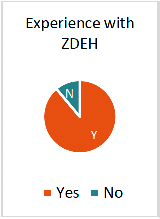
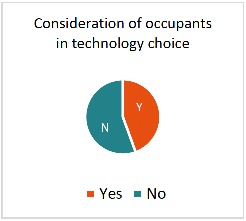
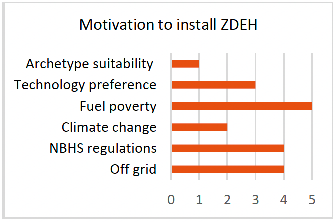
ASHPs are the default option for several organisations in locations which are not connected to the gas grid, as they are cheaper to operate than coal/oil/LPG boilers and stakeholders had as much as 10 years' experience in developing new build housing with ASHPs. Despite being the most well used technology across the project, there was disagreement across interviews on the suitability of ASHPs across different housing types. Whilst all advised they were suitable for houses, some indicated that these were not suitable in flats, whilst others advised that they have or would install shared and/or individual ASHP systems in flats.
"Air source heat pumps are now our default choice, even where gas is an option."
Heat networks were chosen for several projects by one housing association as they were deemed the most cost-effective solution for flats. Direct electric systems were also deemed to be cost effective options for flats with low heat demands. However, there was a lack of consensus around the suitability of direct electric heating systems across stakeholder interviews, due to the trade-off between high operational costs and low capital costs.
All stakeholders considered other and multiple technologies in the design process before selecting their preferred technology, and provided the following reasons for rejecting certain ZDEH technologies:
- Ground source heat pumps: More expensive and complex to install than ASHPs.
- Direct electric systems: Expensive for tenants to operate.
- Heat networks: Centralised issues affect all properties on the network and no choice in heat bills for tenants.
All stakeholders advised that they would specify the same ZDEH technology in future developments, either because the technology was tried and tested, or because there were perceived to be limited alternative options that would be cost-effective or align with incoming building regulations.
3.2.3. Challenges in implementing and commissioning ZDEH
Implementation Challenges
All stakeholders had experienced at least one challenge during the implementation of a ZDEH system. Figure 3 provides a summary of the types of challenges stakeholders faced. The largest two challenges often go hand-in-hand and are related to the supply chain availability and the geographical location of the project.
In terms of the supply chain a key issue was the availability of contractors in the local area, including installers, maintenance companies and specialist refrigerant contractors. Getting contractors to travel to remote regions was difficult and one stakeholder found that local contractors were not included on procurement frameworks. Other supply chain issues raised included getting spare parts and products, as well as the quality of contractors available (i.e., a contractor not installing the systems correctly).
As well as being an issue for supply chains, the location of the project also impacted the technology choice, with a few stakeholders in coastal regions needing specific ASHP models that have suitable protection against corrosion from the salinity of the air, limiting the number of available options. Capital costs are also heightened in remote locations, especially when local contractors are not available.
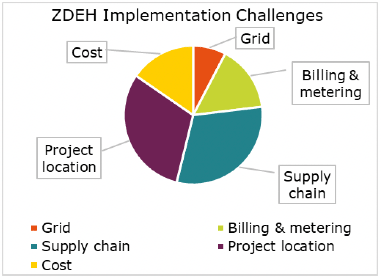
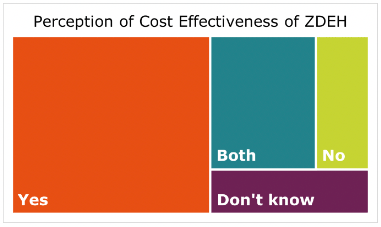
Billing and metering were a challenge for the DHN projects, where stakeholders did not know how to bill tenants' heat. Other challenges included stakeholders having limited input into the specification of systems in design and build contracts and being unsure if systems had been correctly sized for heat and hot water demands.
"Placing ASHP external units can be challenging, you want to avoid the front of properties and bedrooms, and you also need to minimise pipe length and satisfy planners."
Despite the challenges to implementation the majority of stakeholders perceived the ZDEH systems to be cost effective, if the property is designed correctly (i.e. has a low heat demand) and the heating system is operated and managed correctly.
Commissioning Challenges
The majority of projects did not experience issues during commissioning. One stakeholder mentioned that ASHPs had not been programmed correctly, but this was quickly identified and rectified. The other snagging issue was due to the wrong thermostats (hardwired rather than moveable wireless ones) being installed, but this was also rectified quickly.
Generally, post-completion support from manufacturers or developers is available but has not been required. One stakeholder had been aware that this was available for an ASHP project, but it had not been offered or requested after commissioning.
Whilst not specified for projects in this evaluation, thermal storage was referenced by three stakeholders, who were aware of projects where these had been badly commissioned and led to expensive bills for tenants. One stakeholder mentioned that this had later been rectified in the project they were aware of.
3.2.4. In-situ performance
System performance
As outlined in Figure 4, all stakeholders except one were happy with the performance of the ZDEH system. All stakeholders from projects with ASHP systems indicated that they were generally happy with the performance of the systems. One stakeholder indicated this was not always the case previously, and they now only install heat pumps from three manufacturers which have proven to work well. Another also indicated that system performance varies significantly between ASHP manufacturers.
"We've been installing heat pumps for over ten years. We have around 280 of the same type and only one external unit has failed to date."
Direct electric systems were noted to be disappointing (to both the landlord and tenants) as they were more expensive to operate than expected. Overall stakeholders had low awareness of the operating efficiency of the systems compared to expectations (and accordingly, limited awareness of heat bills compared to pre-occupancy estimates, except via tenant feedback).

Maintenance requirements
Most stakeholders from projects with ASHP and direct electric systems advised that no maintenance had been required other than planned annual services. There is a split between maintenance being conducted in-house or by external contractors. The former is more prevalent in larger organisations, and less common for heat networks.
One stakeholder advised that following issues with ASHP refrigerants, it was very difficult to find specialist contractors in the Highlands who could address these problems. This illustrates the issues that remote and rural locations face compared to urban areas that tend to have more contractors (as established in Phase 1), although conversely, one stakeholder indicated that this was not an issue in the Western Isles.
"It's a 200-mile round trip for a refrigerant engineer to reach us, which means callouts are really expensive."
It was also evident from two stakeholders that past, negative experiences with ASHPs from certain manufacturers guided them to choose heat pump models that they deemed to be of higher quality. In both cases, one particular ASHP model is now their favoured option for all new builds, as it is deemed to require less maintenance compared to other models, and has a reliable supply chain for spare parts, should these be required.
3.2.5. Occupant experiences
Handover
All organisations interviewed provided a home manual for new tenants, which includes instructions on how to operate their heating systems. The level of detail in these manuals appears to be widely variable. Four stakeholders indicated that they share YouTube videos with tenants to further explain how to work their heating systems. Some also provided advice on what electricity tariffs to select, whilst others left this to the discretion of their tenants.
Three stakeholders indicated that if requested, maintenance teams would visit homes to demonstrate how the systems work. Where this was offered, it was utilised, as tenants requested support to familiarise themselves with ASHP systems. Figure 5 illustrates the support stakeholders provide at handover and post-handover, as well as early advice on energy tariffs.
"We get our tenants to do a demonstration to us at the end of our introductory visits, to show us they can control their ASHPs."
Controls
Across the projects in the WP1 scope, all ASHP heating systems are controlled by centralised thermostats and Thermostatic Radiator Valves (TRVs). For the heat networks, controls are via a heat interface unit and were noted to be easy to use from anecdotal tenant feedback. There was a split among the ASHP projects (and evidentially within one housing provider) on how to advise tenants on controls. Two stakeholders advised that they set up the ASHPs to recommended programmes and urged tenants not to interfere with these without energy advisers' support. However, two stakeholders indicated that they encourage their tenants to program their ASHPs to a temperature routine that matches their occupancy patterns. It was noted that with the latter approach, some tenants were very nervous to do this as they worried (unnecessarily) that deviating from the default settings would negatively impact their electricity bills.
Three stakeholders indicated that their projects housed some tenants with disabilities or assisted living requirements. Only one indicated that these tenants required additional support or measures to operate their heating systems: in wheelchair-accessible homes TRVs were located at the top, rather than at the bottom of, the radiators. They added that they would usually specify low-surface temperature radiators, but that the lower output temperatures of ASHPs bypass this requirement.
General feedback
"95% of our tenants are completely satisfied with their heat pumps."
"100% of our tenants said their heat pumps kept their homes warm on a cold winter's day."
Tenant feedback is most commonly collected through surveys conducted after the first year of occupancy. These surveys cover all aspects of the home and tend to ask very few questions about heating systems. Therefore, feedback on comfort levels and system control tends to be collected anecdotally only (i.e., via complaints and/or requests for support). Across the projects represented in the interviews, overall satisfaction was deemed to be high, particularly for ASHPs. However, one project had experienced very mixed responses to ASHPs, with one tenant advising that they were the worst thing about their home.
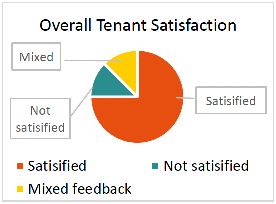
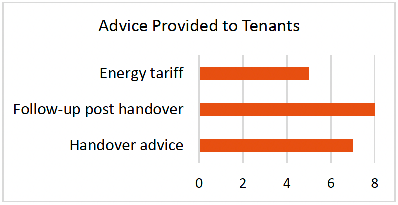
"There were several requests for help in the first year but there have been none in the last five years."
Whilst support is required initially, this has tended to reduce significantly after the first year of occupancy. ZDEH, particularly ASHPs, evidently require an adjustment period where tenants are used to conventional (fossil fuel) systems. For example, tenants of one project were nervous that the ASHP was supposed to run all the time, whilst tenants of another project were surprised that their clothes would not dry on the radiators, due to lower operating temperatures.
Tenants of a development with direct electric heating indicated that this was too expensive and also difficult to operate. For heat networks, a common issue that tenants noted was that they were not able to choose their heating supplier. The heat networks were billed via a third party, which tenants felt provided bad customer service. However, satisfaction with bills and heat delivery was noted to be high.
3.2.6. Monitoring
Four of the organisations interviewed had conducted monitoring of the ZDEH systems for the following purposes:
- Billing some of its heat networks (but uses floor area benchmarking to estimate heat consumption in other).
- Monitoring energy demands across whole housing stock to investigate ASHP performance, among other factors.
- Monitoring heat demand to decide if maintenance is required.
- One stakeholder collected data manually from homes' heat meters specifically for this study.
The other stakeholders indicated that they have not conducted monitoring because the option of doing so had not been considered and they would likely only do so if pushed to by the Scottish Government or by new regulations.
3.3. Analysis of numerical data
3.3.1. Overview
Four of the affordable housing provides participating in the evaluation were able to provide (some of) the numerical data requested. A summary of this is provided in Table 2 below.
The data provided by Hillcrest Homes represents annual gas consumption for the whole heat network for four developments, rather than the consumption of individual units, which is not known to the housing association as it is metered and billed by a third party. As such, this data is not presented as it does not align with the aim of this evaluation, and limited insight can be drawn without significant assumptions regarding network losses.
Table 2: Summary of numerical data provided
Organisation: Osprey Housing
- Location: Aberdeenshire
- Technology: ASHP
- Type of data: One year of annual electricity consumption from ASHP for 13 homes
Organisation: Hebridean Housing Partnership
- Location: Western Isles
- Technology: ASHP
- Type of data: Estimated annual heat demand, one year of annual electricity consumption from ASHP for 7 homes
Organisation: Hillcrest Homes
- Location: Edinburgh
- Technology: Heat network
- Type of data: One year of total annual demand and costs for 4 heat networks
Organisation: Lochalsh and Skye Housing Association
- Location: Highland
- Technology: ASHP
- Type of data: One year of annual electricity consumption (whole household – not just heating) for 24 homes
As only two organisations provided data in the same format, only these two datasets, representing 20 homes, can be compared on a like for like basis. The other dataset is therefore analysed independently. In order to suggest if these datasets represent affordable energy bills, standard tariffs from Energy Saving Trust have been applied to compare them financially to the UK Government's mean domestic energy consumption statistics. Given the low volume of the data collected, the analysis should not be taken as representative of the Scottish context.
3.3.2. Additional real-world data sources
As demonstrated above, only four of the housing associations participating in the evaluation were able to share real-world data. To expand the dataset, we contacted the following 30 organisations to request any data they might have:
- 4 Scottish universities which research energy in new homes.
- 5 manufacturers of ZDEH technologies.
- 10 companies that provide home energy monitoring solutions.
- 5 affordable housing developers (councils and RSLs).
- 4 private housing developers.
- 2 electricity distribution network operators.
Of the above organisations, only one was aware of any real-world data relating to heat in new builds. This is for two Welsh developments of 49 homes, with ground source heat pumps. This data was requested for this evaluation but was not made available within the required time. Additional conversations with industry representatives for WP2 were also used to source additional data. However, numerous individuals confirmed that there is a distinct lack of real-world data on ZDEH in new build homes in the public domain.
A report by Changeworks and Delta-EE for ClimateXChange, 'Heat pump use in Scotland: an evidence review', [1] provides an overview of the heat pump monitoring projects conducted up to the publication of the report in August 2021. Of the 12 projects named in their report, 8 were conducted in homes, including a monitoring project by the Hebridean Housing Partnership, who are participating in this evaluation. Of the other data sets, none were deemed relevant to this work, as they either focused on retrofitted installations, a single building and/or hybrid heat pumps, or were over ten years old and therefore not representative of current building standards.
3.3.3. Analysis of data provided
Lochalsh and Skye Housing Association (LSHA) collected total electricity demand figures for 2020 from Suisnish Place, a development of 24 homes. The values provided represent 20 of these homes and are presented graphically in Figure 6 and tabulated in Table 3. Annual electricity costs have been presented, based on the Energy Saving Trust's standard electricity tariff in the UK as of April 2022.[2]
Figure 6 illustrates that broadly, electricity consumption at Suisnish Place increases with the number of beds (a proxy for occupancy). The tabulated average annual electricity consumption per bed values suggest that this relationship is linear, with the exception of the bungalow unit. A likely explanation for this unit type yielding an above average electricity consumption per bed, is that bungalows will have the highest percentage of building envelope compared to other the unit types, resulting in greater heat load (and therefore a higher electricity demand to drive a heat pump). However, this is heavily caveated by the small size of the data set.
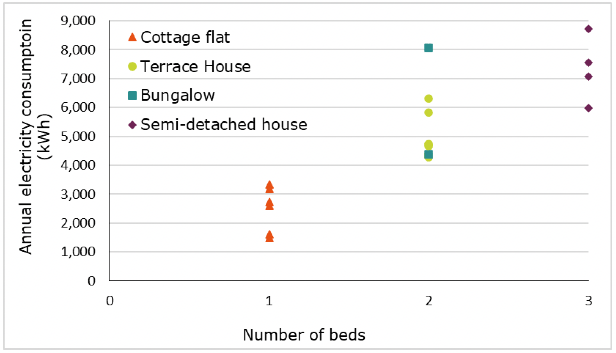
The UK Government's mean annual energy consumption levels for homes are 13,600 kWh for gas and 3,600 kWh for electricity.[3] Assuming a gas boiler efficiency of 90% and a gas price of 7.4p/kWh (based on Energy Saving Trust data), this equates to a mean annual gas spend of £906 and a total energy spend of £1,925, excluding standing charges (which are also excluded from our analysis). This suggests that the 1- and 2-bed homes at Suisnish Place are cheaper to run on average compared to the mean UK home. The 3 bed units are, on average, £151 more expensive to run, however caution should be taken comparing 'real data' with estimated and inferred data on mean energy consumption and electricity costs. Moreover, the extent to which this is due to heat being provided from a heat pump is impossible to determine, as factors such as occupancy patterns, occupant comfort preferences and local climate (among others) influence energy consumption.
| Unit Type | Cottage flat | Terrace House | Bungalow | Semi-detached House |
|---|---|---|---|---|
| Number of units | 8 | 8 | 2 | 6 |
| Number of beds | 1 | 2 | 2 | 3 |
| Range in electricity consumption (kWh/an) | 1,498-3,351 | 4,279-4,741 | 4,375-8,058 | 5,969-8,725 |
| Average electricity consumption (kWh/an) | 2,496 | 4,901 | 6,217 | 7,334 |
| Average electricity consumption per bed (kWh/an) | 2,496 | 2,450 | 3,108 | 2,445 |
| Average annual electricity cost @ 28.3p/kwh | £706 | £1,387 | £1,759 | £2,076 |
Hebridean Housing Partnership (HHP) and Osprey Housing (OH) provided annual heat data for 7 homes in the Western Isles, and 13 homes in Aberdeenshire, respectively. The data provided is presented in Table 4 for HHP, and in Table 5 and Table 6 for OH. In Figure 7, heat pump demand is plotted against occupancy and floor area for all 20 homes.
| Unit Type | A. Semi-detached bungalow | B. Semi-detached bungalow | C. Semi-detached bungalow | D. Semi-detached bungalow | Detached bungalow | E. Semi-detached bungalow |
|---|---|---|---|---|---|---|
| Number of units | 1 | 2 | 1 | 1 | 1 | 1 |
| Number of beds | 1 | 2 | 3 | 3 | 4 | 6 |
| Floor area (m2) | 53 | 78 | 88 | 105 | 133 | 154 |
| Heat pump consumption (kWh/an) | 1389 | 2589 | 2475 | 4110 | 5579 | 12372 |
| Heat pump consumption per bed (kWh/ an) | 1389 | 1386 | 825 | 1370 | 1395 | 2062 |
| Heat pump consumption per m2 (kWh/m2/ an) | 26 | 36 | 28 | 39 | 42 | 80 |
| Annual heating cost @ 28.3p/kwh | £393 | £785 | £700 | £1,163 | £1,579 | £3,501 |
From Table 4, it is clear that heat demand increases with floor area and occupancy. The values for consumption per bed and per unit floor area do not indicate that this trend is linear. This is not surprising given the small dataset, the impacts of occupant behaviour, and the fact that the homes are not all built to the same specification or in the same development (although they are all constructed to the Bronze sustainability standard and utilise the same heat pump model).
Using the Energy Saving Trust standard electricity tariff, heat pump costs for the HHP homes can be compared to the mean spend for UK homes with gas heating (£906/year). Table 4 indicates that only the smaller three-unit types are as affordable to heat as the UK average. However, the homes that are more expensive to operate are larger in floor area and number of beds (4 and 6 bed units) and this is likely not directly relevant to the mean UK consumption data, which is likely to be more representative of a 3-bed home (although the data source does not confirm this). Moreover, given the location of these homes in the Western Isles, they will more likely require more heat and therefore have higher costs than average, given that the temperature in northern Scotland is lower than in the majority of the UK.
| Unit Type | Detached bungalow | Semi-detached bungalow | Terrace bungalow | Detached bungalow | Terrace House | Terrace House | Terrace House |
|---|---|---|---|---|---|---|---|
| Number of units | 1 | 1 | 1 | 1 | 1 | 1 | 1 |
| Number of beds | 1 | 2 | 2 | 2 | 2 | 2 | 2 |
| Floor area (m2) | 54 | 56.2 | 58 | 69.77 | 75.5 | 76.6 | 84 |
| Heat pump consumption (kWh/an) | 574 | 1236 | 557 | 1370 | 2198 | 2870 | 1993 |
| Heat pump consumption per bed (kWh/ an) | 574 | 618 | 279 | 685 | 1099 | 1435 | 997 |
| Heat pump consumption per m2 (kWh/m2/ an) | 11 | 22 | 10 | 20 | 29 | 37 | 24 |
| Annual heating cost @ 28.3 p/kwh | £162 | £350 | £158 | £388 | £622 | £812 | £564 |
| Unit Type | Terrace Bungalow | Semi-detached bungalow | Terrace House | Terrace House | Terrace House | Terrace House |
|---|---|---|---|---|---|---|
| Number of units | 1 | 1 | 1 | 1 | 1 | 1 |
| Number of beds | 3 | 3 | 3 | 3 | 3 | 3 |
| Floor area (m2) | 72.8 | 72.89 | 89 | 93.2 | 96.2 | 103.8 |
| Heat pump consumption (kWh/an) | 783 | 1346 | 1911 | 2257 | 2447 | 2279 |
| Heat pump consumption per bed (kWh/ an) | 261 | 449 | 637 | 752 | 816 | 760 |
| Heat pump consumption per m2 (kWh/m2/ an) | 11 | 18 | 21 | 24 | 25 | 22 |
| Annual heating cost @ 28.3p/kwh | £222 | £381 | £541 | £639 | £693 | £645 |
From Table 9 and Table 10, the relationships between electricity consumption and floor area or occupancy is not as clear. This can be explained by the small size of the dataset, the impacts of occupant behaviour, and the fact that the homes are not all built to the same specification, are across different developments and utilise different heat pump models. However, the two tables do indicate that regardless of the variability in demand, all of the OH homes are more affordable to heat than the UK average gas heated home (£906/year).
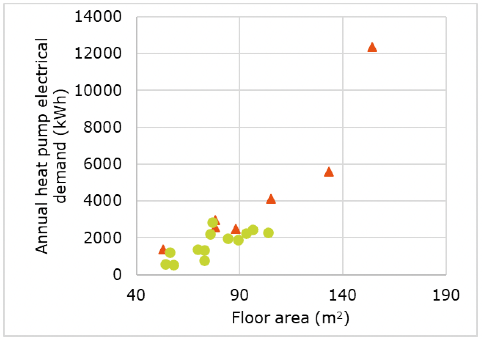
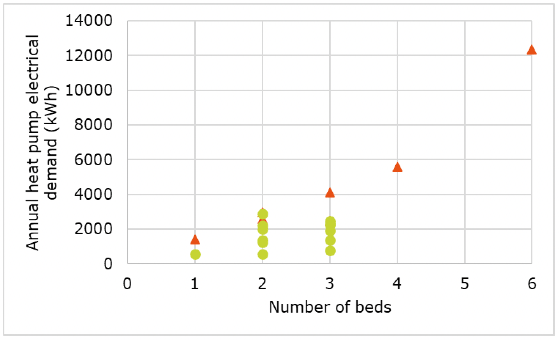
Figure 7 demonstrates a linear relationship between heat pump demand and floor area across the 20 homes, with HHP homes having higher heat consumption. In Figure 8, the relationship between number of beds and heat pump demand is weaker for the OH homes than the HHP homes, although it is difficult to explain these discrepancies with any certainty of accuracy.
Contact
Email: 2024heatstandard@gov.scot
There is a problem
Thanks for your feedback